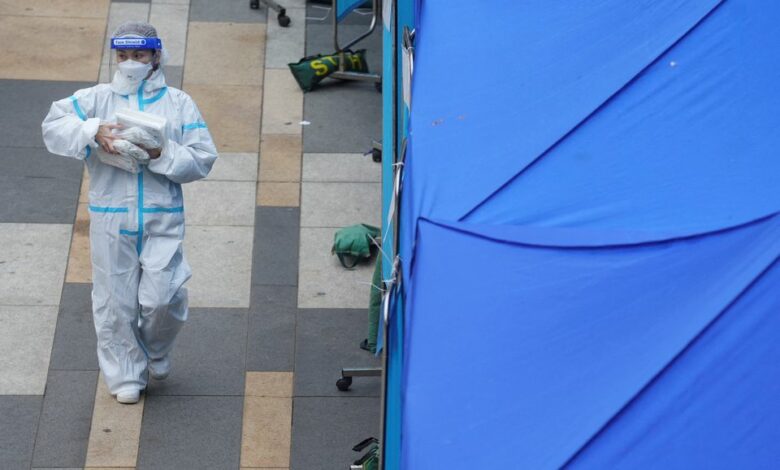
HONG KONG, Feb 11 (Reuters) – Hong Kong’s stubborn pursuit of zero COVID infections has stretched hospital and quarantine facilities nearly to their limit in the global financial hub, raising the near-term prospect of changes to admissions and isolation policies.
Chinese-ruled Hong Kong is also grappling with the overload on doctors and nurses as it follows mainland authorities’ strategy of curbing outbreaks as soon as possible, in contrast with many other places that aim to “live with COVID”.
Despite only a handful of COVID-19 patients being in critical condition, some hospitals are already full, mostly with people suffering little more than a sore throat. Asymptomatic patients and close contacts take up beds in quarantine.
Medical experts are also worried about an expected surge of infections that could dramatically increase severe infections, especially among the largely-unvaccinated elderly.
“Pragmatic adjustment of discharge criteria is required to ensure that completely asymptomatic individuals don’t take up valuable bed space,” said Siddharth Sridhar, a professor in the microbiology department of the University of Hong Kong.
Authorities had been able to control the virus for the past two years with extensive testing, including of pets such as hamsters, as well as mandatory hospital admissions and isolation for thousands of infected residents and close contacts.
That changed this year with the arrival of the more transmissible Omicron variant. Daily cases are at record highs, having increased 10-fold in February, when many celebrations ushered in the Lunar New Year. read more
Now several public hospitals are full, and infected patients have to wait days to be admitted. And the worst is yet to come: some experts predict nearly 30,000 cases each day by the end of March from just over 1,000 now.
Hospital beds for COVID-19 patients are at 90% occupancy, data from the city’s Hospital Authority showed, while isolation facilities were also nearing their maximum.
“Accident and emergency departments have to deal with a large number of patients,” said a spokesman for the Hospital Authority, adding that current occupancy rates had “almost saturated” facilities.
CAPACITY CONSTRAINTS
This week officials said measures to prevent community transmission would be changed to let close contacts isolate at home while people with no symptoms could stay in government quarantine facilities, designated hotels or at home.
Earlier, Hong Kong used to hospitalise even asymptomatic patients and order weeks of isolation for close and secondary contacts in sparse government quarantine facilities in the effort to stop community transaction.
Authorities said they were trying to figure out how best to tackle the worsening situation.
“I can’t deny that the Hospital Authority faces a number of challenges, whether it’s the number of beds or its manpower,” said its chief manager, Larry Lee.
Some epidemiologists have suggested allowing arriving visitors to isolate at home, so as to free up designated quarantine hotels for patients with mild symptoms.
If the situation worsens, authorities could allot beds and quarantine space on the basis of severity of symptoms and need. Eventually, some patients with more serious symptoms may have to monitor their condition at home.
For now, contact tracing is full on, but testing capacity is also stretched.
Hundreds of thousands of people have been mandated for tests, with elderly and children queuing for hours in tight spaces outside testing centres, which fans infection risks.
China pledged help this week, with testing kits and assistance to build another quarantine facility high on Hong Kong’s wish list. read more
But the low vaccination rate among Hong Kong’s elderly is the threat most likely to overwhelm its medical system, and frustrate the goal of zero COVID.
“The top priority right now is to get vaccinates in older people,” said Ben Cowling, an epidemiology professor at Hong Kong University.
“We know we’re going to face more infections. We know it’s already a little bit late. Still, late is better than never.”

